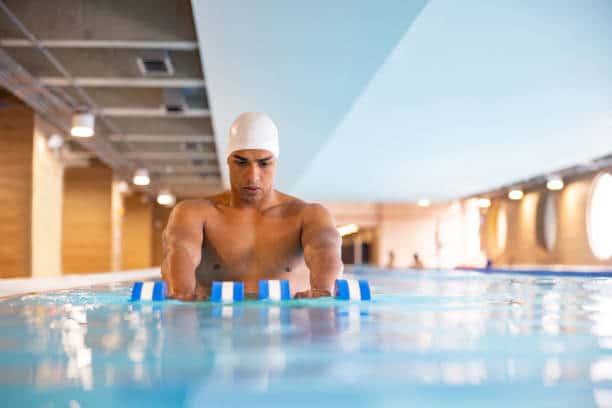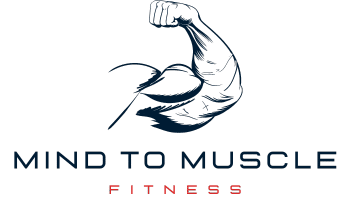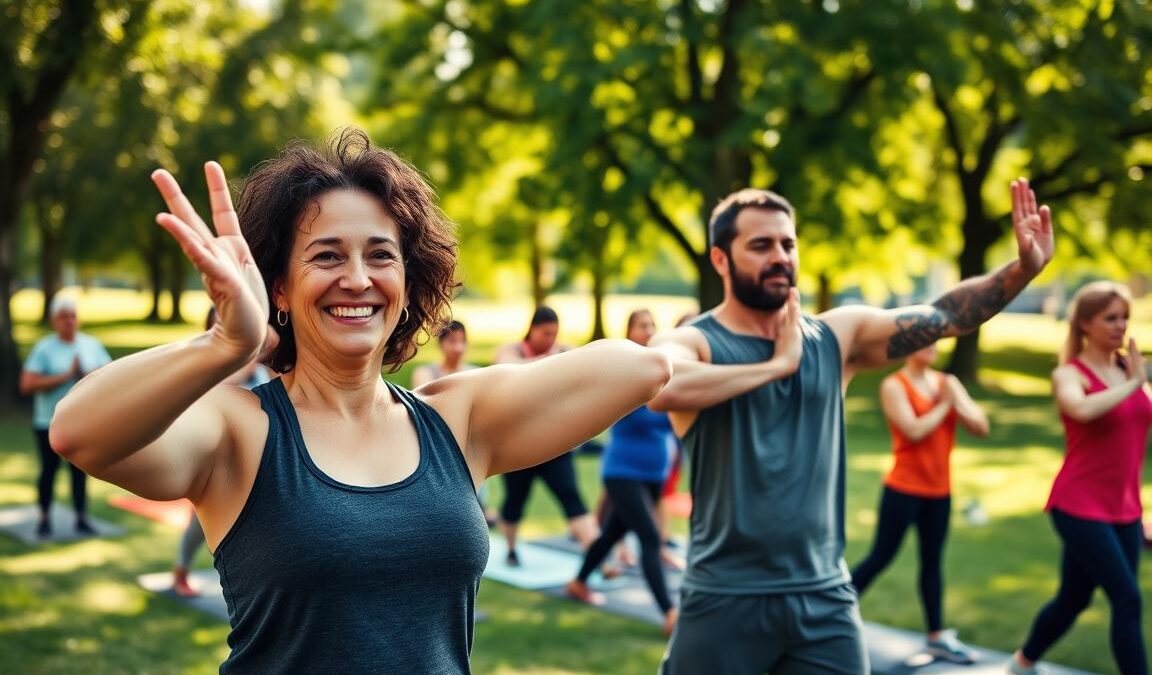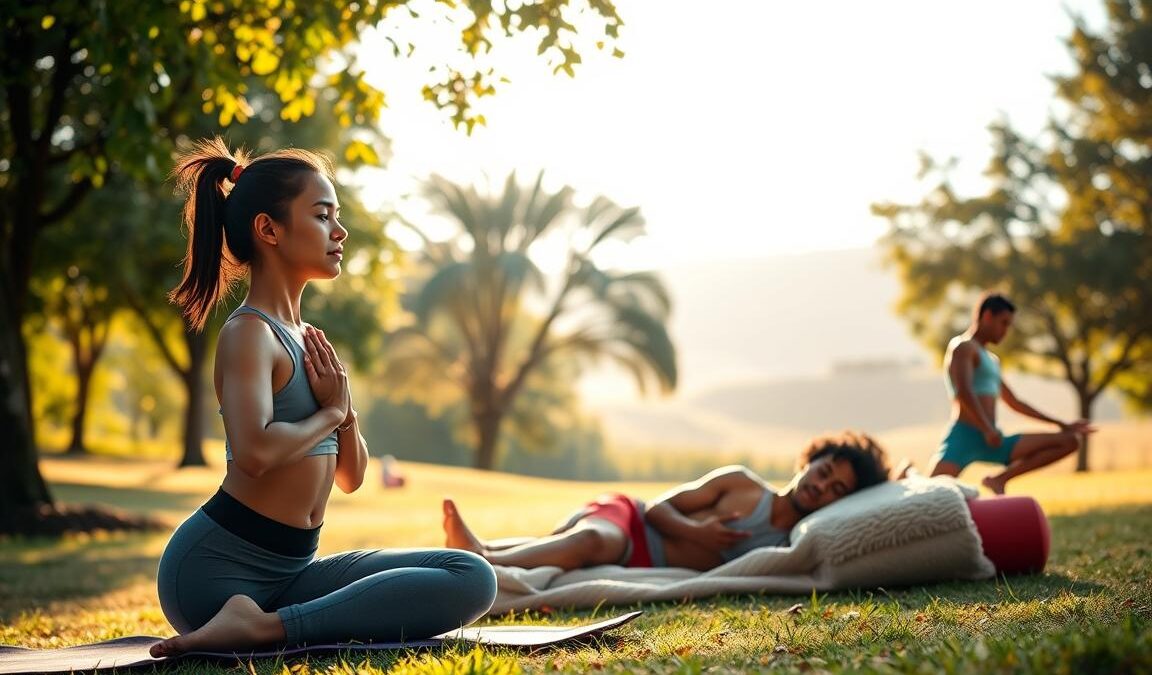
What Muscle Does Swimming Workout: Swim Your Way to Strength
Ever wondered what muscle does swimming workout? Swimming is a fantastic full-body exercise that engages almost every muscle group. When you swim, you’re not just getting a great cardio workout; you’re also strengthening and toning your entire body.
The water provides natural resistance, which challenges your muscles and enhances your overall strength. From your arms and shoulders to your core and legs, swimming is a comprehensive workout that builds muscle and improves endurance.
Did you know that swimming can burn between 500 to 700 calories per hour? That’s just one of the many benefits of this versatile exercise. Swimming isn’t just enjoyable; it’s also an incredibly efficient way to work out. By pushing against the resistance of the water, you engage various muscle groups, making your swim a powerful muscle workout.
In this article, I’ll dive into how swimming targets different muscles throughout your body, from your shoulders down to your glutes. We’ll explore how swimming builds muscle strength and definition, proving that each swim session helps you achieve a stronger, more defined physique. Swimming is unique in that it combines resistance training with cardiovascular exercise, making it a full-body workout that enhances both endurance and power. When it comes to muscle strength vs muscle size, swimming primarily works on improving strength and toning rather than significantly increasing muscle mass. By engaging large muscle groups with low-impact resistance, swimming allows for a balanced approach to fitness that promotes strength, flexibility, and overall well-being.
So, the next time you hit the pool, remember that you’re not just having fun—you’re also working out your entire body!
The Full-Body Benefits of Swimming

Swimming is a standout full-body workout that engages multiple muscle groups at once. As you glide through the water, each stroke actively works your arms, chest, back, and legs. This all-encompassing exercise offers a harmonious blend of muscle engagement and cardiovascular benefits, making it a superb choice for a well-rounded fitness routine.
Engaging Multiple Muscle Groups
When you swim, you’re not merely gliding through the water; you’re actively engaging multiple muscle groups simultaneously. The resistance of the water is excellent for building muscle endurance and strength. For example, the repetitive motion of your arms enhances upper body strength, while your legs drive you forward, working out the lower body. This full-body engagement offers a balanced workout that’s tough to match with other exercises.
Improving Cardiovascular Health
Swimming isn’t just great for building muscles—it’s also fantastic for cardiovascular fitness. Every lap you swim elevates your heart rate, enhances circulation, and boosts heart health. This aquatic exercise offers substantial cardiovascular benefits by continuously challenging your heart and improving endurance. As a result, swimming provides a comprehensive workout that strengthens both your muscles and cardiovascular system.
| Benefit | Description |
|---|---|
| Full-Body Workout | Engages arms, chest, back, and legs simultaneously |
| Muscle Endurance | Enhances muscle strength due to water resistance |
| Cardiovascular Fitness | Boosts circulation and improves heart health |
| Aquatic Exercise | Provides a low-impact workout suitable for all ages |
Upper Body Muscles Engaged in Swimming

Swimming is incredibly effective for the upper body, especially for building strength in the deltoids and back muscles. Each stroke engages your shoulder muscles and back, offering a comprehensive workout that ensures both areas receive balanced and thorough exercise. Whether you’re performing freestyle, backstroke, or butterfly, swimming provides a solid upper body workout that enhances muscle strength and endurance.
Strengthening Your Shoulders
Different swimming techniques are highly effective for targeting and strengthening your shoulders. For instance, the freestyle and butterfly strokes are particularly good at working out the deltoids. As you extend and pull through the water with these strokes, your shoulder muscles engage intensely, leading to improved deltoid strength over time.
Engaging Your Back and Lats
When it comes to working your back, swimming is incredibly effective. Strokes like the backstroke are particularly good at activating the latissimus dorsi, the large muscles of your back. This stroke, along with others, also engages the rhomboids and trapezius, ensuring a thorough workout for your back muscles.
Here’s a breakdown of how various swimming strokes target different upper body muscles:
| Swimming Stroke | Targeted Upper Body Muscles |
|---|---|
| Freestyle | Deltoids, Trapezius |
| Butterfly | Deltoids, Rhomboids |
| Backstroke | Latissimus Dorsi, Trapezius, Rhomboids |
Through consistent practice of these techniques, you will notice significant improvements in both deltoid strength and overall upper body conditioning.
Core Muscles and Stability
The core is essential for keeping your body stable in the water when swimming. The core muscles’ constant activation aids rotation and balance.
Working Your Abs
While swimming, your rectus abdominis and obliques, among other abdominal muscles, are continuously engaged. This ongoing involvement helps you stay afloat and, over time, builds a stronger core. You will improve your overall swimming performance if you concentrate on strengthening your core.
Improving Balance and Stability
For swimmers to stay stable throughout a swim, their core muscles are essential. You’ll notice increased stability and balance in and out of the water as you strengthen these muscles. A strong core frequently results in better posture and can lessen back pain, making daily activities easier and more comfortable. Increasing the strength in your core can have a big impact on how you swim overall.
Lower Body Muscles Targeted in Swimming

Swimming is an excellent exercise for the lower body, effectively engaging various muscles with each stroke and kick. It not only tones the leg muscles but also strengthens the glutes, offering a well-rounded aquatic leg workout.
Toning Your Legs
Swim kicks are essential for propelling you through the water, and they place significant focus on your lower body muscles. Each kick targets the thighs and calves, helping to tone and strengthen these areas. Regular swimming sessions not only improve the effectiveness of your kicks but also contribute to a more defined appearance of your legs and calves.
Activating Your Glutes
The intense movement of each swim kick ensures that your hips and glutes are actively engaged. This activation is essential for maintaining strength and stability. Whether you’re swimming for leisure or training competitively, this consistent action is excellent for sculpting your glutes and contributing to a well-toned lower body.
What Muscle Does Swimming Workout
Swimming offers a comprehensive workout by targeting multiple muscle groups. Whether you’re gliding through the water with a freestyle stroke or challenging yourself with a butterfly stroke, you’re engaging various muscles at once.
Let’s break down the main muscle groups targeted during a swimming session:
- Upper Body: Your shoulders, chest, and upper and lower back are heavily engaged. The arm movements in different strokes ensure you build strength and flexibility in these areas.
- Core Region: This includes your abs, obliques, and lower back. Swimming requires a stable core to maintain proper body alignment and efficient movement through the water.
- Lower Body: Quads, hamstrings, calves, and glutes are consistently activated. Kicking movements in swimming work these muscles, offering a balanced workout.
Here’s a detailed look at the different muscles involved:
| Muscle Group | Specific Muscles | Swimming Strokes |
|---|---|---|
| Upper Body | Shoulders, Chest, Upper and Lower Back | Freestyle, Backstroke, Butterfly, Breaststroke |
| Core | Abs, Obliques, Lower Back | All strokes |
| Lower Body | Quads, Hamstrings, Calves, Glutes | Freestyle, Butterfly, Breaststroke, Backstroke |
Consistent swimming routines help increase muscle tone, strength, and overall physical fitness. It’s a great way to work out multiple muscle groups while improving your overall health.
Tips to Maximize Your Swimming Workouts
Looking to get the most out of your swimming workouts? Here are some swim workout tips to make every lap count. Start by varying your swimming strokes. Different strokes, like freestyle, backstroke, and breaststroke, engage various muscle groups, ensuring a balanced workout and reducing the risk of muscle strain.
Maintaining effective swimming techniques is crucial for injury prevention and performance improvement. Keeping your body streamlined reduces resistance and boosts your speed. Focus on proper form, whether you’re doing freestyle or butterfly strokes. To enhance strength and endurance, incorporate interval training into your routine. This approach challenges your cardiovascular system and supports muscle growth.
Consistency is vital for optimizing your swim workouts. Regular practice helps develop muscle memory and gradually improves your skills. Make swimming a frequent habit to see noticeable results over time. Additionally, don’t overlook the importance of diet and hydration. Proper nutrition and staying hydrated are key to supporting muscle repair and enhancing overall performance.
By following these structured swim training tips, you can elevate your routine. Stay committed, keep pushing your limits, and you’ll see improvements in your swimming strength and speed.



